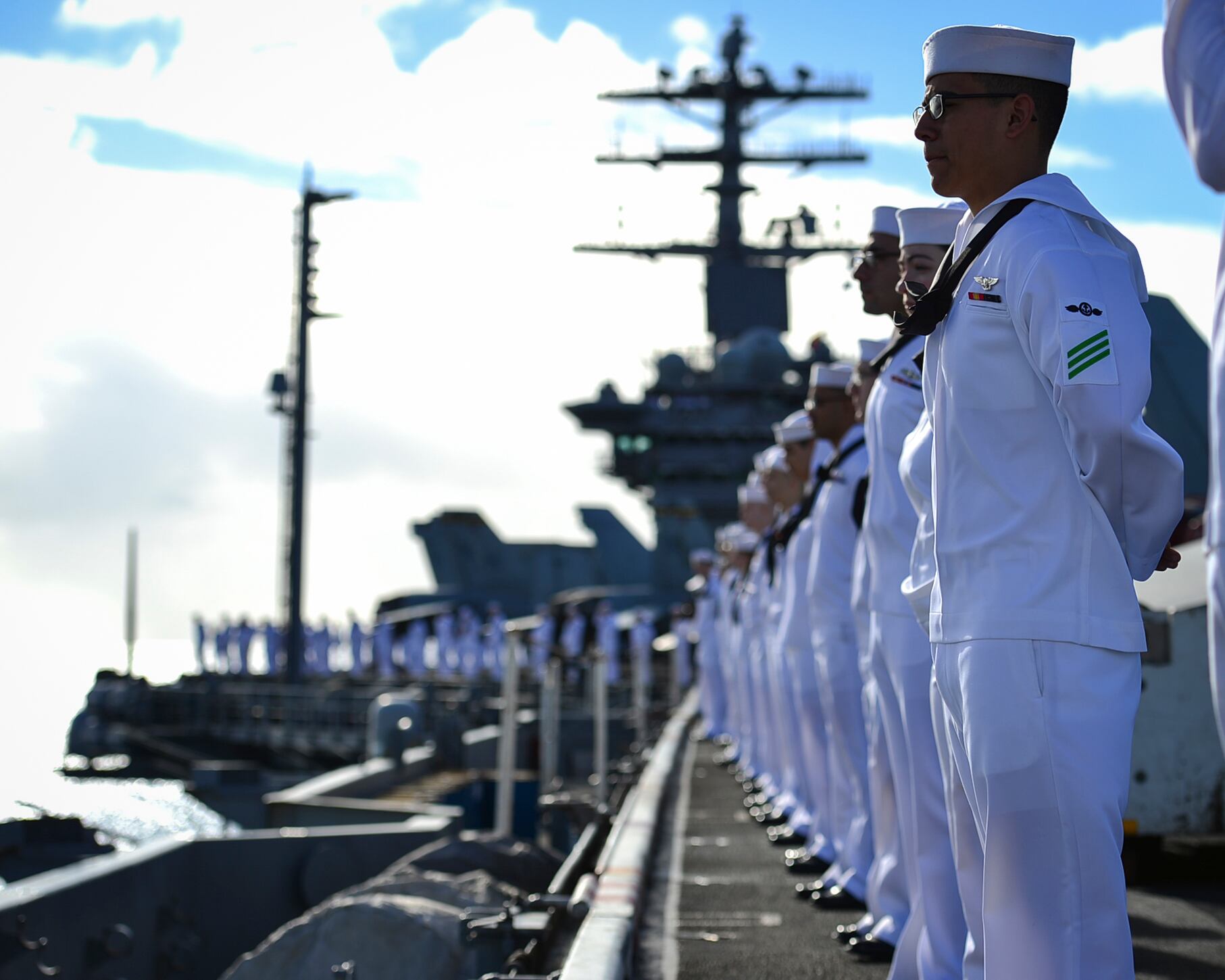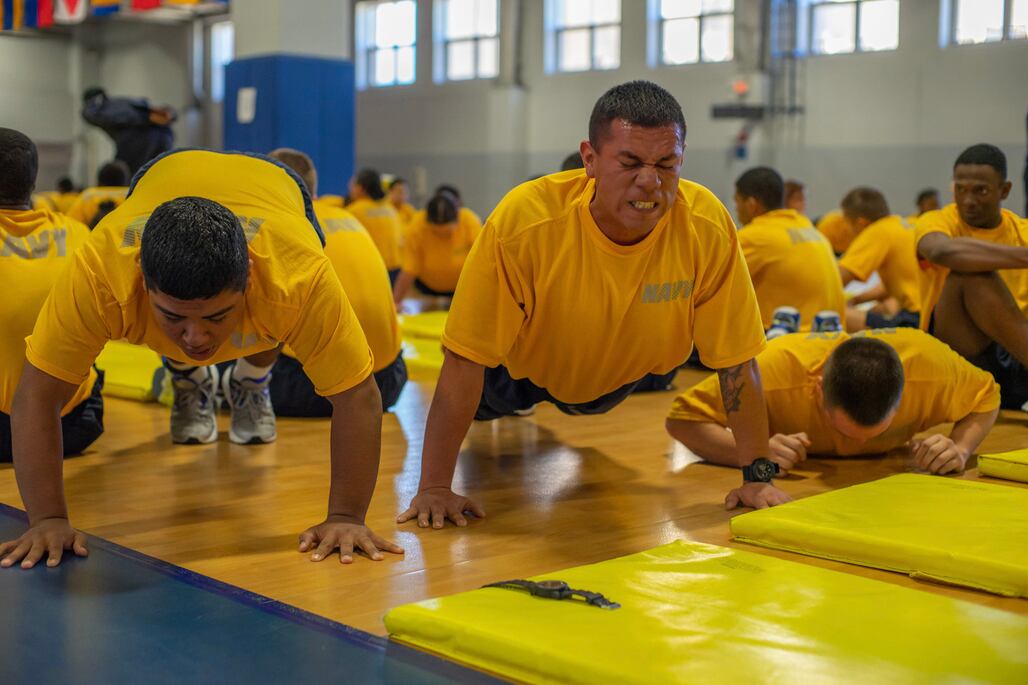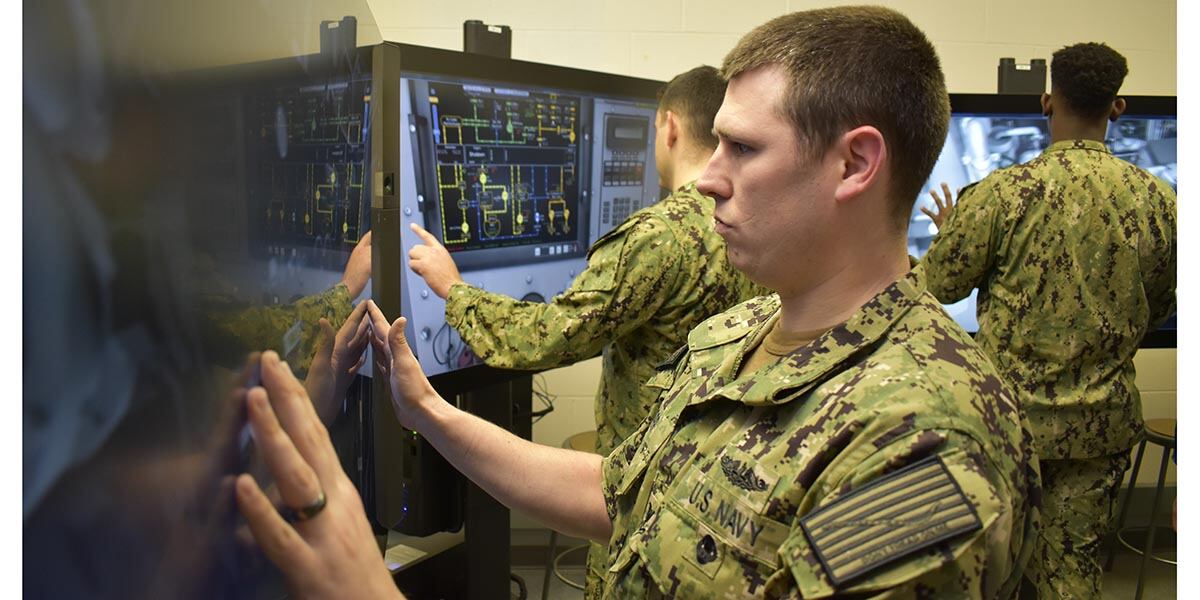The Navy’s massive training overhaul enters a new stage on Monday as the first of 51 revamped initial training pipelines starts pushing sailors to the fleet.
The conversion is expected to run through August but when it’s done the Navy will have launched an innovative way to teach operations specialists.
Considered for now a pilot program, the OS training course will mix traditional instructor-led classes with interactive simulations that let sailors get hands-on experience before they report to the fleet.
Over the next two years, other sailors will begin this form of blended learning at their technical schools. Eventually, the Navy plans continuing education courses to continue on the waterfront and on board ship.
It’s all part of what the Navy terms “Ready Relevant Learning,” a series of reforms designed to overhaul how personnel are trained throughout their careers.
“I’d say we’re over the the initial cultural learning curve of transitioning to Ready Relevant Learning,” Vice Adm. Bob Burke the Navy’s top uniformed personnel official, told Navy Times.
“Each of the [Navy warfare] communities, studied it. They’re comfortable with the the potential that it can bring in terms of faster learning, better retention and therefore better readiness. And that’s really what we’re after.”
RELATED

For years, the Navy has operated an instruction system that forces everyone to go through the same training. For many of the Navy’s ratings, these "A" schools were the only training a sailor would get during a long career, often learning concepts they wouldn’t use for years — if at all.
Ready Relevant Learning’s reforms spread the training over an entire career, providing a fresh concept or sill when the sailor needs it. That slashes by 30 percent the time needed to bring new recruits to the fleet.
Regardless of the school, the instruction is now broken into “blocks” that are designed to deliver specific skills. New information technology tracks which blocks have been mastered and matches sailors to billets in the fleet.
That’s expected to increase mobility across the ratings because sailors will share certain blocks with peers. If they want to find better assignments or advance faster, they can train in the necessary blocks without repeating what they already know.
RELATED

Burke said that 51 of the Navy’s 87 ratings will rely on block learning.
The remainder — such as Navy SEALs and divers — will continue to maintain their traditional training pipelines, although the sea service is investigating how to supplement their instruction with more simulation-based learning.
Burke said that most of the schools slated for the move to block learning already restructured their curriculum and are now training in that mode. But some await the computer-based simulations assisted by interactive displays that let sailors learn by performing tasks.
“This year we used Ready Relevant Learning virtual technology to augment a lot of our legacy trainers in some of our most time intensive training tracks like surface sonarmen, and Aegis fire controlmen,” he said.
Burke shrugged off rumors that training will be transformed totally into high tech simulations.
“We’re not doing away with instructors,” he said, adding that the Navy is only looking to infuse training with “virtual or augmented reality” when that hikes learning.
RELATED

Burke said that individual communities get to decide how to mix traditional classroom instruction and virtual learning. The Navy will provide the training and the tools, but the fleet will drive the curriculum, determining which skills are taught to sailors and when they receive the instruction.
The reforms are partly driven by experiments at boot camp in Great Lakes, where low tech training aids offer hands-on training in essential skills.
“People learn better by doing, if they can do reps and sets and just do it over and over again,” Burke said. “Do it in emergency conditions or in combat conditions on a simulator — hey, what better way to learn?”
Monday’s launch of the new blended training for operations specialist incorporates lessons learning in the wake of the 2017 deadly collisions involving the guided-missile destroyers John S. McCain and Fitzgerald, Burke said.
“That course is a very robust course, lots of hands-on where there hadn’t been before,” Burke said.
Burke hopes to “get the 51 ratings all into that modern delivery type of method” within the next two years.
In fiscal year 2020, the Navy plans to roll out the blended training for personnel specialists and both surface and submarine yeoman ratings, plus the courses for the ship’s servicemen and non-submarine logistics specialists.
Revamped aviation maintenance administrationman, intelligence specialist and submarine logistics specialist schools follow in FY 2021 and submarine sonar technicians the next year.
“They’re going to start rolling out pretty quickly after that,” Burke said. “We’ll get all those 51 in the new technology. Then we’re going get them everywhere at the waterfronts. And then the next push will be to get them on the ships.”
Mark D. Faram is a former reporter for Navy Times. He was a senior writer covering personnel, cultural and historical issues. A nine-year active duty Navy veteran, Faram served from 1978 to 1987 as a Navy Diver and photographer.




